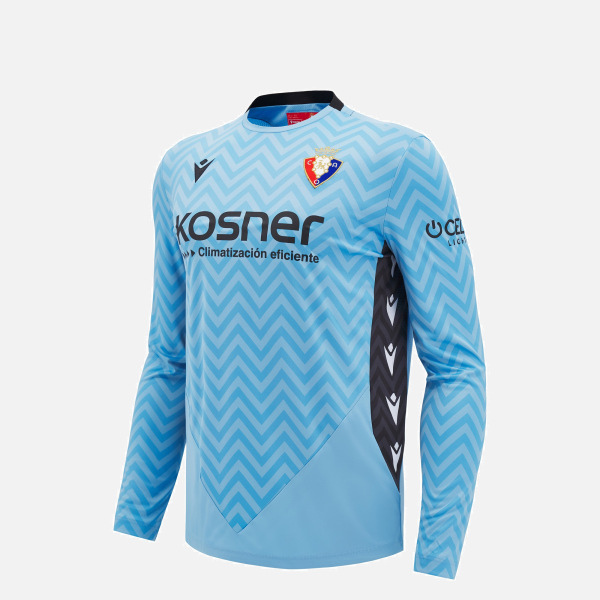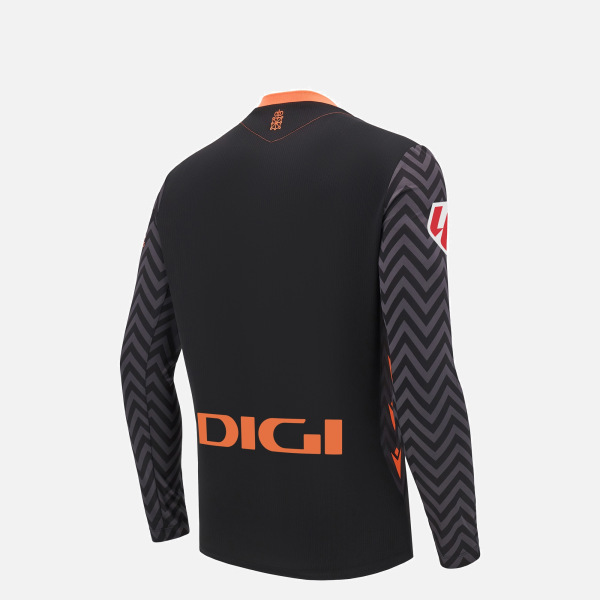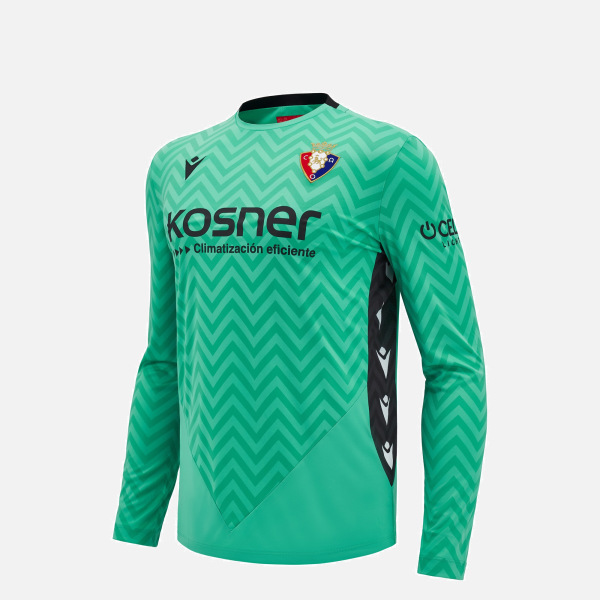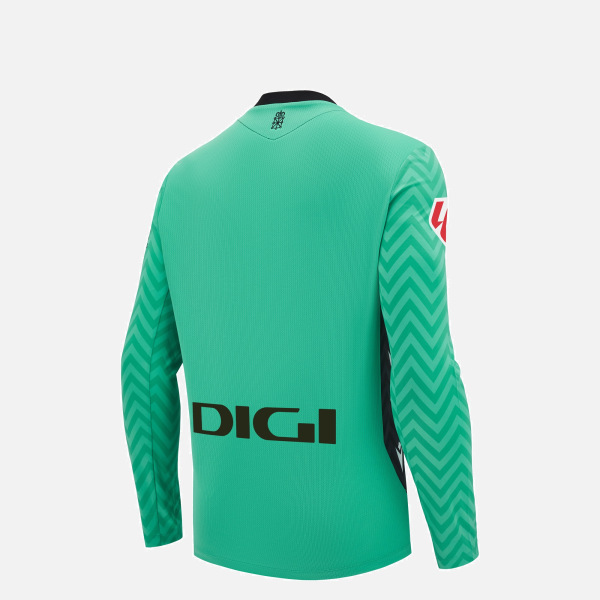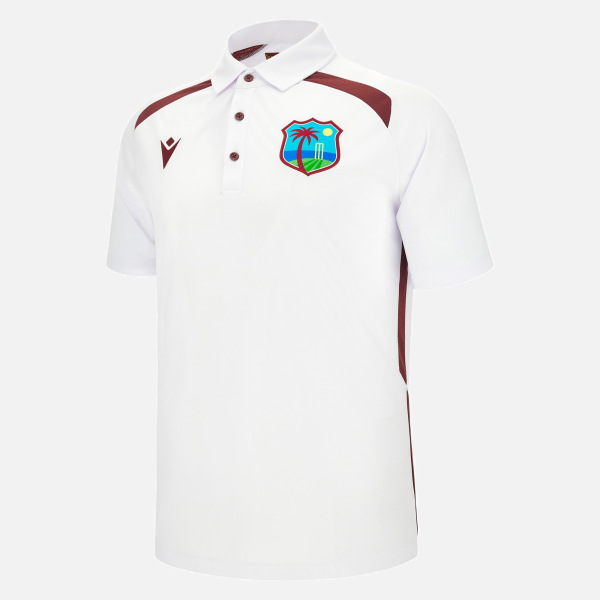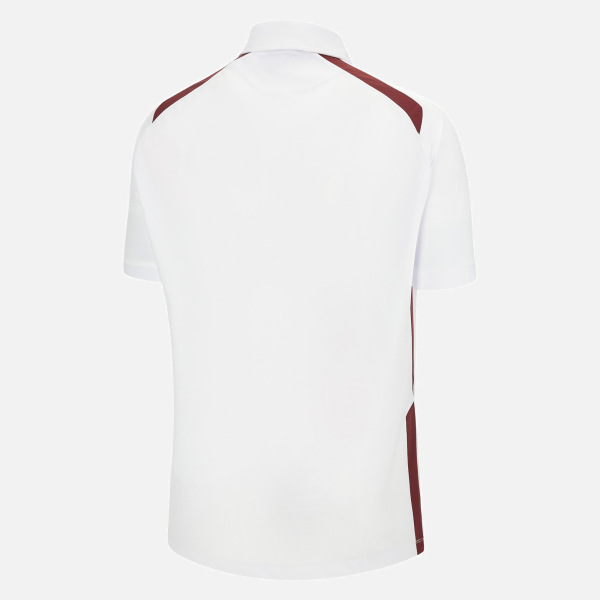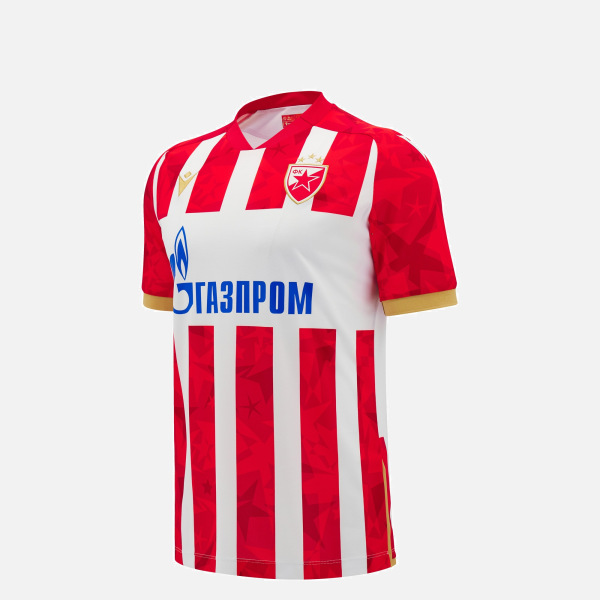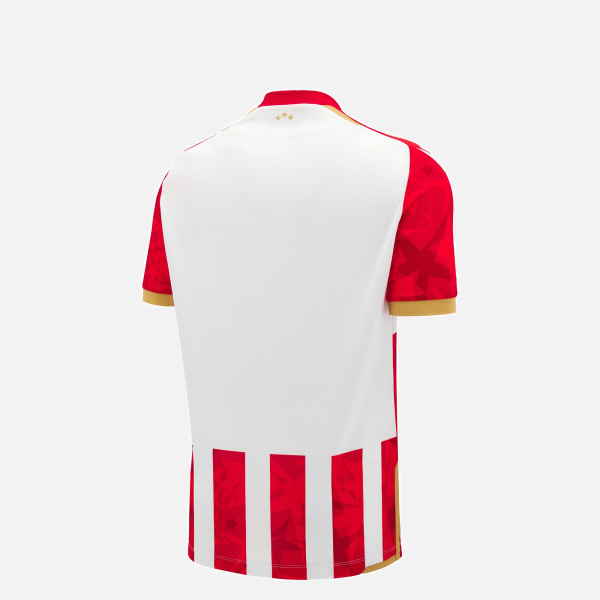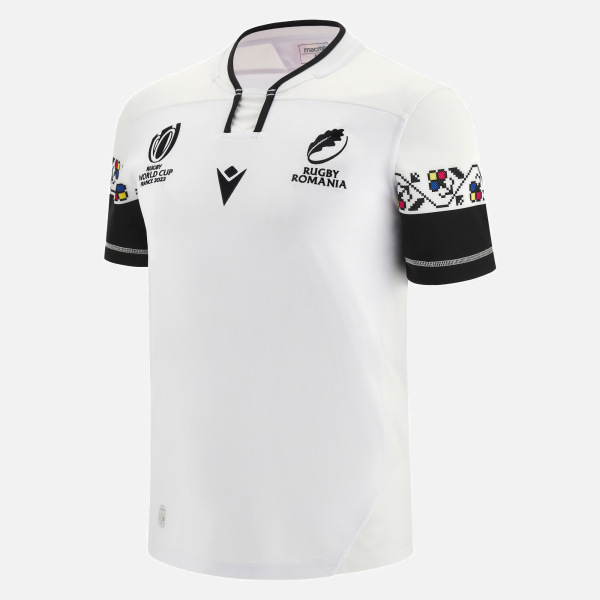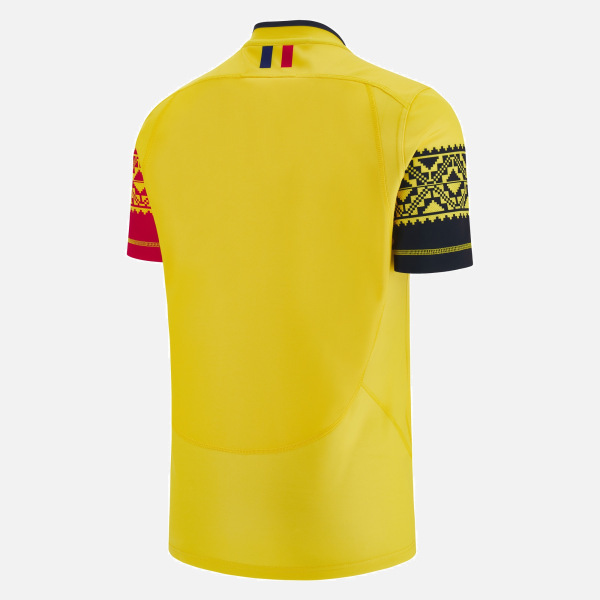HOW FOOTBALL SHIRTS ARE MADE: MATERIALS, TECHNOLOGY, DESIGN
The sun is shining brightly over the stadium, and the atmosphere is electric. Then, one by one, the players enter the football pitch, wearing the same colors and lines that also fill the stands. The crowd erupts into cheers. And despite the seeming chaos, it’s easy to see which teams the singing and shouting are meant for—because fans are proudly wearing their beloved team’s shirt to show their support.
Football shirts are more than just a uniform. They’re a symbol of the team’s spirit and identity. To both a die-hard fan and a casual observer, one thing that always stands out on the pitch is the football shirt. Have you ever wondered about the materials and technology that go into creating these iconic shirts? In this article, we'll explore the ins and outs of football shirt production, from the choice of fabrics to the design process, and let you in on how Macron has been upholding its commitment to sustainability as a manufacturer of professional and consumer sportswear.
What are football shirts made of?
Football shirts have evolved significantly over the years. Today, most shirts are made of synthetic fibers such as polyester or a blend of different materials, which are favored for being lightweight, breathable, and moisture-wicking. In the past, cotton and sometimes woolen materials were used to make football shirts. But they were heavier, warmer, and soaked up sweat, and thus uncomfortable to wear.
Advancements in technology have allowed for the development of high-tech and specialized fabrics with performance-enhancing properties such as body temperature regulation and even muscle fatigue reduction. So, players can stay cool, dry, and at their best performance on the pitch.
Football shirt materials
Did you know that the football shirt is also a player’s armor? Okay, not technically. But with the right material and design, it can help protect the player from injuries and support them physically. For example, a form-fitting shirt made of elastic material can help minimize the risk of shirt tugging by opponents that could bring the player crashing down to the ground.
The point is—choosing the right football shirt material is crucial as it affects not only the shirt’s durability and aesthetic appeal but also the players’ comfort and performance. What are football shirts made of? Football shirts are typically made of polyester and a blend of polyester and elastane, but many different materials are used depending on the feature prioritized in the shirt’s design and its purpose.
-
Polyester is a synthetic polymer fabric that is durable, lightweight, breathable, and sweat-wicking often used to make football shirts. It is resistant to creasing and only absorbs very little water, about 0.4% of its weight. Polyester is the perfect material for keeping a player cool and dry as its fibers move moisture away from the skin onto the outer surface of the shirt, where it can quickly evaporate.
-
Elastane (commonly called spandex or lycra) is also a polymer, and it’s usually incorporated into football shirts. It’s not as breathable as polyester, but its main beneficial property is its elasticity. Elastane can be stretched to more or less 600% of its length before breaking. It’s a great material that allows for maximum freedom of movement and also withstands the pulling and grabbing commonplace in a football game.
-
Polyurethane is another class of polymer that is used to add names, numbers, and logos on the shirt. It’s waterproof.
Football shirt printing and lettering
Printing and lettering are essential aspects of football shirt design. The process typically involves heat transfer or sublimation printing, which produces vibrant and long-lasting designs. With sublimation printing, the design and or football shirt letters are printed onto a transfer paper and then heat-pressed onto the shirt.
Clubs often use embroidery for crests and other details, while lettering for football shirts is typically applied using a heat transfer process. For player names, numbers, and sponsor logos, polyurethane is often used.
Football shirt technology
Football shirt technology has come a long way in recent years. As athlete tracking has become very common in football, some shirts now feature pockets for cardio monitors or GPS trackers. Such devices allow coaches to monitor players' fitness and overall performance, potentially decreasing risk of injury, and adjust training regimes accordingly.
Other advancements include the use of antimicrobial fabrics to prevent odor as well as integrated compression to improve blood flow and reduce muscle fatigue. Meanwhile, form-fitting shirts made of hydrophobic material are very effective in wicking away sweat from the body, keeping the player dry.
Manufacturers also use recycled materials to create sustainable football shirts, a trend that is expected to continue in the future. Macron has a range of Eco Fabrics that use 100% recycled polyester yarn to make football shirts.
Aside from the materials themselves, the way the fibers in the fabric are woven to create football shirts also matters. Here are some of the fabrics used by Macron:
-
Evertex - comfortable and tear-resistant; features an interlock construction that guarantees strength and versatility
-
Vertilock - with vertical jacquard suitable for football match day shirts; lightweight, durable, and soft
-
Softlock - high-tech fabric specially designed for match kits; light, very malleable, and tear-resistant, quick-drying
-
Eco Softlock - made with 100% recycled polyester yarn; light, soft, tear-resistant, quick-drying
-
Polytech - keeps the body warm; stretchable for a comfortable fit
To know more about the different types of fabrics Macron uses for its football shirts, visit the 2023 Football Catalog.
How football shirts are made
The creation of a football shirt involves several stages, from initial design to final production. Teams collaborate with designers to create a unique look that reflects their identity and brand. Once the design is approved, the manufacturer creates a prototype and begins production. The fabric is cut, sewn, and assembled, including the names, numbers, and crests, before undergoing a series of quality control checks. Finally, the shirts are packaged and shipped to retailers or directly to the teams.
If you have a football team, customizing football shirts for your members is straightforward and easy with My Macron Kit, an app you can use to build a complete kit for your team and personalize products with your team name, logo, and colors. In the app, you simply select the sport and choose the products from the catalog; customize the selected products by adding your team names, numbers, and logos; and save your design in a brochure format.
Football shirt design process
A lot of work is involved in the football shirt design process. Designers closely collaborate with the club to ensure that its brand and identity are reflected in the design.
Here’s a video that will show you a glimpse of that process:
Football shirt manufacturing
The manufacturing industry is under scrutiny due to ethical concerns, and that includes the textile industry. The most significant concerns in the clothing industry include unfair labor practices, environmental pollution, increased use of natural resources, and wasteful production. Manufacturers are called on to follow more sustainable production and business practices and are taking steps to address these concerns.
As Macron strives to provide the highest quality football shirts to clubs, athletes, and fans, we uphold our commitment to greater environmental sustainability through our Macron 4 the Planet initiative. We guarantee the highest standards of cotton quality and worker protection, offer products made of 100% recycled and recyclable plastic, implement policies to recycle and reuse paper and plastic for packaging, and more. Macron makes the green choice in all aspects of our business, from production to distribution.
Wrapping it up
Football shirts are much more than just a piece of clothing. They're a representation of a team's identity and are created using specialized materials, advanced technology, and intricate design processes. The sustainability touchpoints within manufacturing are becoming increasingly important, and it is essential for manufacturers to continue innovating while prioritizing ethical and sustainable practices. Football shirt production will undoubtedly continue to evolve and improve, ensuring that players look and feel their best on the pitch.
Shop the most popular Macron Football Kits


